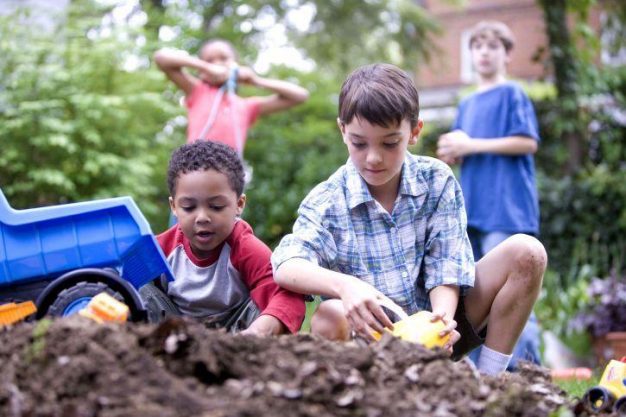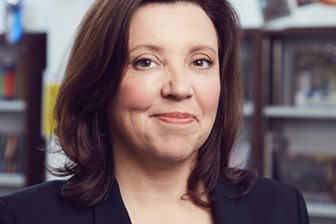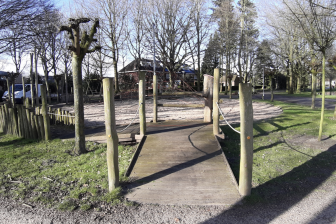
Play sufficiency is a question of spatial justice
Wales is the first country in the world to legislate specifically for children’s play. In this latest in our series of interviews to coincide with today’s conference on Children’s Play in the Urban Environment, Mike Barclay and Ben Tawil of Ludicology discuss the statutory Play Sufficiency Duty and how the approach of the North Wales city of Wrexham is engendering some pioneering research.
Why do you think children’s play is an important issue for modern cities?
A significant proportion of the population in cities will inevitably be children and one thing we know about children is that, due to their playful disposition, they will inevitably try and find time and space for play wherever they find themselves. Playing is central to children’s experience and enjoyment of living and their opportunities for play will therefore affect how they feel about their lives, the places where they live and the people they live with.
However, we also know that if unable to play children will struggle to thrive. If conditions in cities are not conducive to play, children lose the experiences and benefits that only occur through playing but we also have to deal with the challenging consequences that arise out of children’s innate drive to play being at odds with the environments they are growing up in.
What are the main barriers?
Firstly we think it’s important to recognise that not all children are deprived of playing and that, thanks to their capabilities, many (if not most) children still find time and space for play despite the constraints and regulations imposed on them. However their opportunities for play (at least in the UK) have been and continue to be eroded.
Changes need to be made … to create an environment that is more supportive and considerate of children’s innate playful behaviour.
There are a multitude of temporal, spatial and psychological reasons for this, including increasing obligations on children’s time, an emphasis on adult structured activities, increases in the amount and speed of traffic, a lack of spaces for play in close proximity to where children live, fear of crime and litigation, pressure for all parents to be working and restrictions on access to and use of land. This in turn highlights the need for changes to be made across national and local government, within local community practices and adult run institutions, and within people’s own homes to create an environment that is more supportive and considerate of children’s innate playful behaviour.
What is the theme of your presentation at the event?
The theme is play sufficiency and in particular the Welsh Play Sufficiency Duty and our work researching children’s access to time and space for play in Wrexham, North East Wales. Our intention is to illustrate that by adopting an ecological systems approach it’s possible to identify potential affordances for play throughout all aspects of children’s lives and begin to consider how different factors may constrain, regulate or support children’s ability to actually make use of these opportunities. From this priorities can be identified to help maintain those conditions that are supportive and address those that are not. However this will require the involvement of a much broader range of people than might previously have been deemed necessary.
What do you think local and citywide government should do in response to children’s need for space to play
As recommended in General Comment 17 we think local and national governments should introduce legislation based on the principle of sufficiency. Recognition should then be given to children’s satisfaction with their subjective experience of playing as a means to exploring what might be sufficient and how sufficiency can be secured. As Stuart Lester and Wendy Russell suggested, play sufficiency would be a good organising principle for communities because it requires adults to pay greater attention to the ways in which their decisions and actions constrain or support children’s ability to find time and space to play. In doing so it also raises questions of spatial justice and the contested nature of space, attitudes towards children and the ways their childhoods are constructed, and the responsibilities of adults in co-creating conditions for play.
What are the current challenges for practitioners and advocates for children’s play and child friendly cities?
Most parents and practitioners we speak to quickly come to understand the importance of play (if they don’t already) but often still struggle to allow children freedom because of concerns about their safety. We have to make it easier for adults to feel confident in letting children play but that will require a significant shift in culture with changes being made across multiple levels of policy, practice and provision.
Whilst there is much academic study about the nature and function of play we need more about where, when and how play actually occurs
However, those changes will only be possible with an interdisciplinary approach involving people with responsibility for planning, transport, housing, education, leisure, childcare, community safety and so on. One of the greatest challenges is findings ways to engage these diverse partners, negotiating their different agendas and then working towards a shared understanding of what might be possible. Ultimately this will depend on adults prioritising sufficient time to think and talk about children’s play and this has become increasingly difficult in times of austerity.
What do you think are the gaps, if any, in the research about children’s play in the urban environment?
We need more examples of where it’s working, where children are playing out regularly and the factors that are contributing to that happening. Where are the places where parents feel confident to allow their children to play out from a young age? We have to show more people what is possible, how these changes might be made and what the consequences of making those changes would be to the people affected by them. Whilst there is much academic study about the nature and function of play we need more about where, when and how play actually occurs and that research then needs sharing with a wide range of practitioners who can help to create change.
What are your hopes for what might come out of this Child in the City event in London?
We hope that everyone will be gobsmacked by our ingenious research and inspired by our insightful findings, leading to a standing ovation and people punching the air in celebration of our work. Failing that, at least some healthy debate around the need for a more joined up, interdisciplinary approach to supporting children’s play and how we can make this happen; an increased attention on the concept of play sufficiency and the pioneering approach taken by Wales; and greater recognition of the role of playwork in helping to cultivate more favourable conditions for play in communities.
Mike Barclay (top) and Ben Tawil are co-directors of Ludicology. They will make a keynote presentation at today’s international seminar in London.
They were interviewed by Adrian Voce.
Main photo: Ludicology





